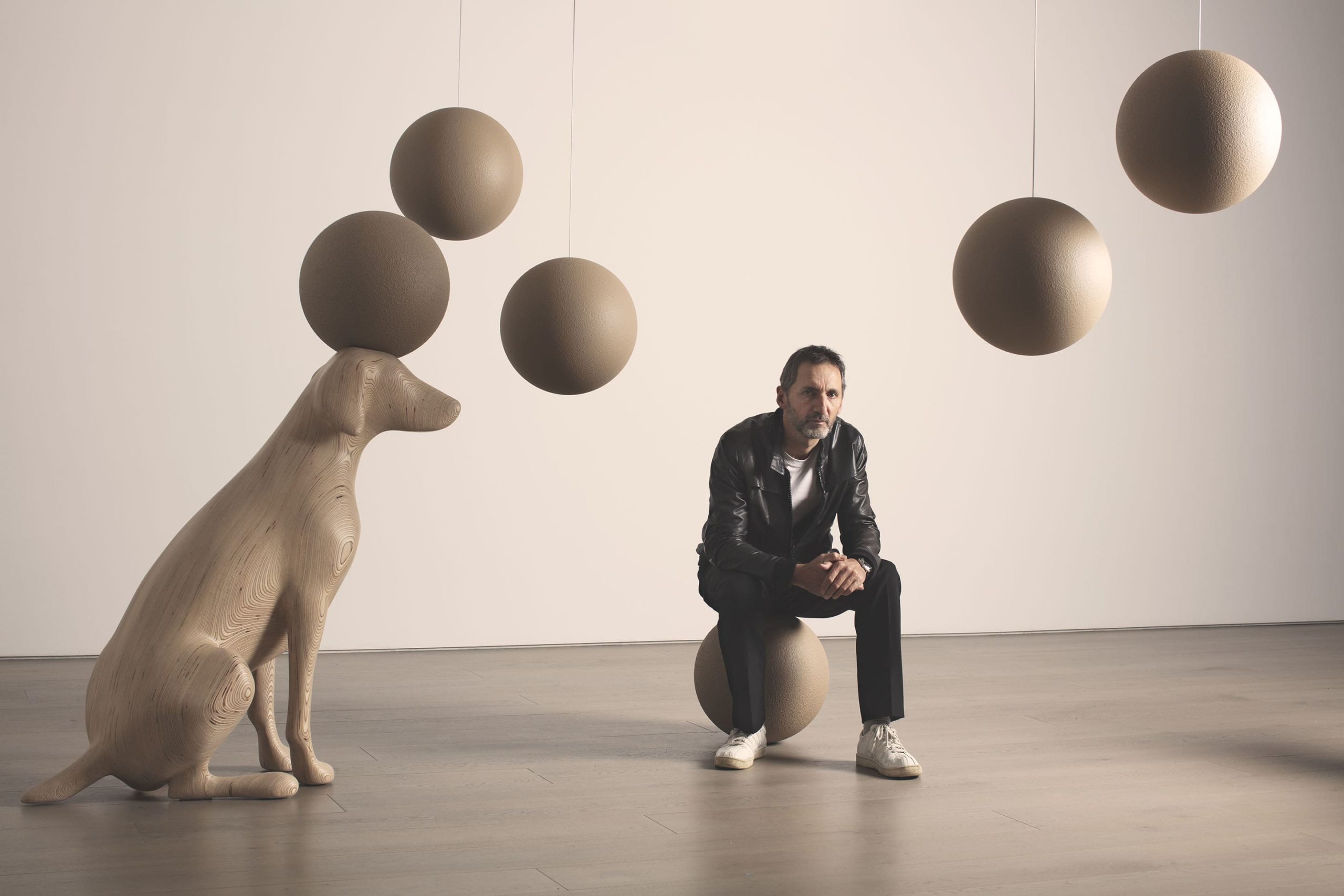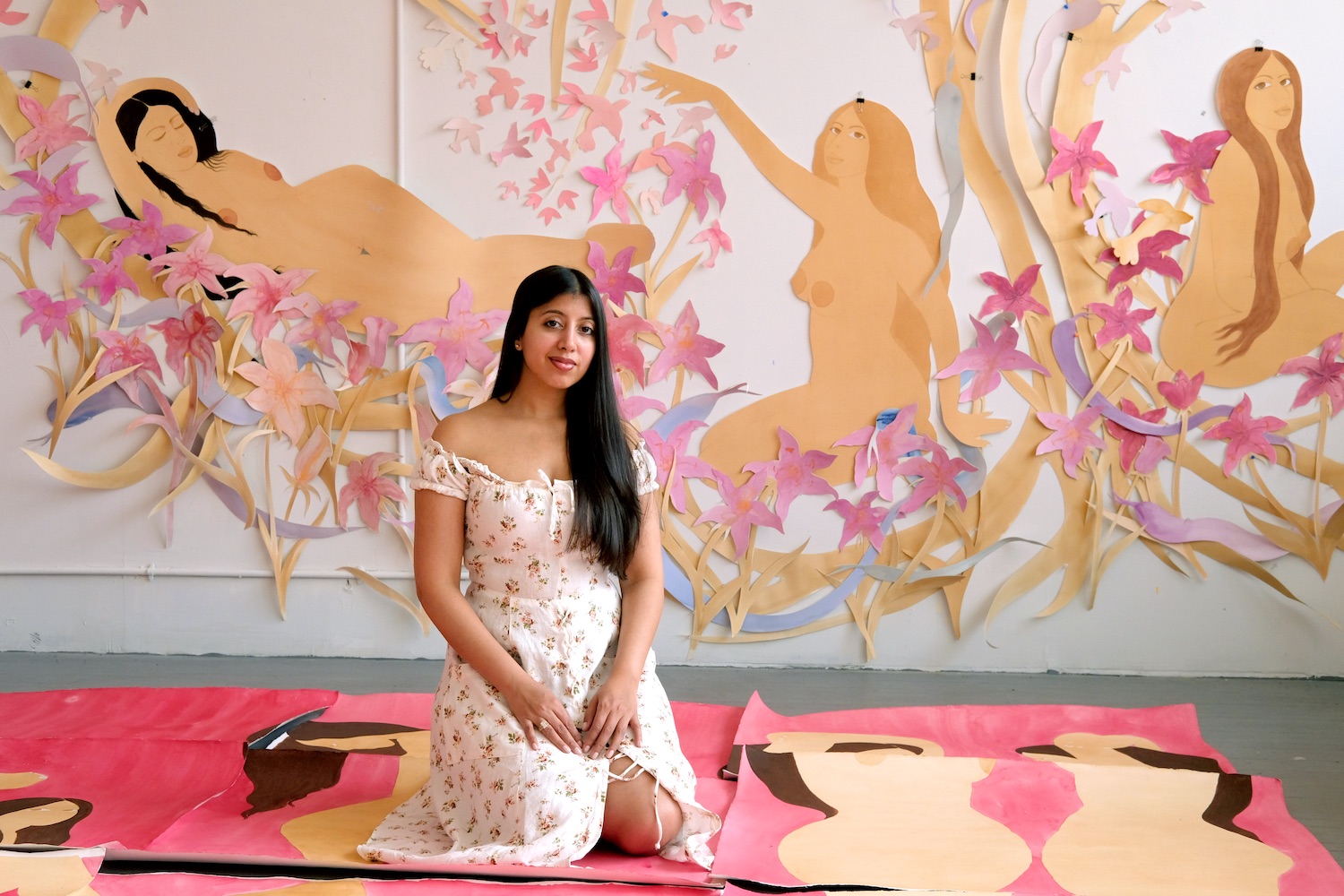The French artist Xavier Veilhan takes a multidisciplinary approach to his practice, working in turn across mediums like sculpture, installation, painting, photography, and performance, often collaborating with musicians and others to fully activate his works. Moving adeptly through this widespread creative oeuvre, the unifying theme of Veilhan’s practice is an interest in the social aspects of art, and the very necessary viewer interactions that come with presenting it—especially in public locations.
The artist has shown work at iconic destinations like the Château de Versailles in 2009, when tourists and other passersby were given the chance to interact with the life-sized human forms and abstracted figures like an angular, contemporary take on a horse-drawn carriage. Also of note, Veilhan’s 2012—2014 Architectones project saw the artist’s faceted figures found existing across the world in Modernist architectural spaces like Barcelona’s pavilion by Mies van der Rohe and within John Lautner’s Sheats-Goldstein Residence in Los Angeles.
Next week, Veilhan’s new work will be installed in an exhibition at Perrotin’s New York Gallery, titled “Autofocus.” On view November 3—December 23, the show includes a series of mobiles and large sculptural forms interacting with the gallery’s high ceilings and natural lighting. While the sculptural forms are undoubtedly human, as in the past, these works mark a visual departure from Veilhan’s practice to date, utilizing smooth surfaces to create faceless, ghostly figures, in contrast to the geometric, faceted approach seen in his past work. To learn more about the exhibition and Veilhan’s practice as a whole, Whitewall caught up with the artist.
WHITEWALL: Can you tell us about your upcoming show at Perrotin, “Autofocus.” What was the starting point?
XAVIER VEILHAN: The Perrotin New York Gallery initially suggested that I do an exhibition of mobiles in this new place, which is very characteristic for its high ceilings and natural light.
I accepted with great enthusiasm, being inspired by the space and excited about doing a new exhibition in the city.
This idea then progressed through contact with another idea which was to work on new forms that I call “blurred sculptures.” This new work is very important to me because it is gradually developing into a new series of works where the idea is a bit like in faceted sculptures: mainly interested in the posture, it reveals forms which are recognized as being human forms, but that are more or less altered to correspond to our perception of these forms.
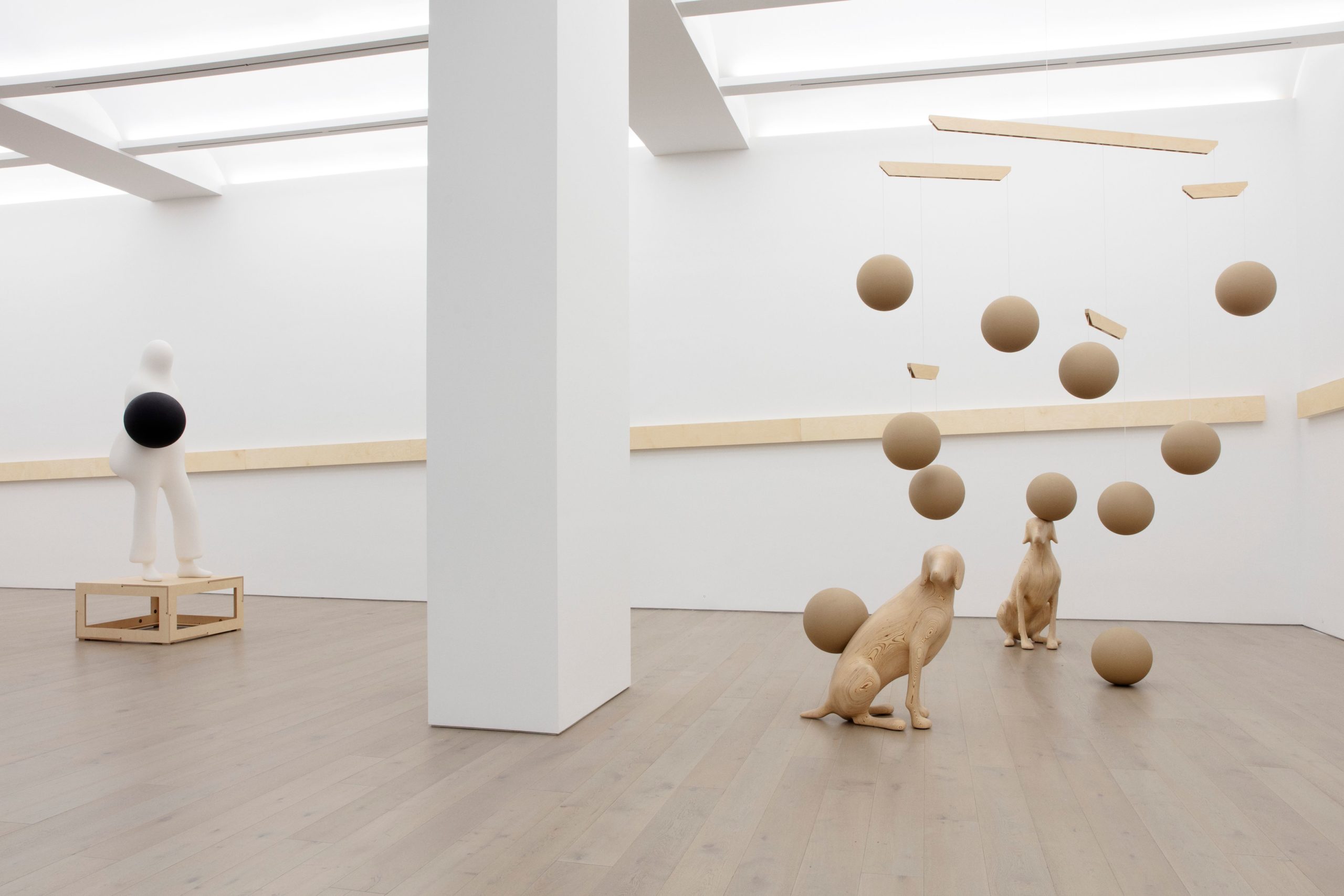
Exhibition view of “Xavier Veilhan: Autofocus” at Perrotin New York, 2021, photo by Guillaume Ziccarelli, © Veilhan / ADAGP, 2021, courtesy of the artist and Perrotin.
WW: These works on view are visually quite different from your recent works. What drew you to this new direction? Aesthetics aside, are there any new ideas or concepts you’ve explored here?
XV: The attempt with this new series is to have soft shapes without edges, synthetizing the position of the people in space. We have something very specific in our brain that recognizes the human shape. A human silhouette will have more impact than anything else, probably because the most primitive part of our brain has been told to know about whether this thing appearing in my visual field is a man’s silhouette or something else.
It’s a new development of a same idea. The typical thing between my blurred sculptures and faceted sculptures is the simplicity of the shapes and the reduction of them to the attitude more than the details. In opposition, the attitude is what we live with so when we are walking in the city surrounded by other people that we don’t know, and without communicating with them, still there is an exchange.
Moreover, the other important element of this show is the space! The upper floor of the gallery is very high, but its volume is coherent, it respects the normal proportions of a room. It is therefore interesting to play with this notion of scale. By creating volumes that are proportional to the room, it is rather the scale of the visitor who is called into question.
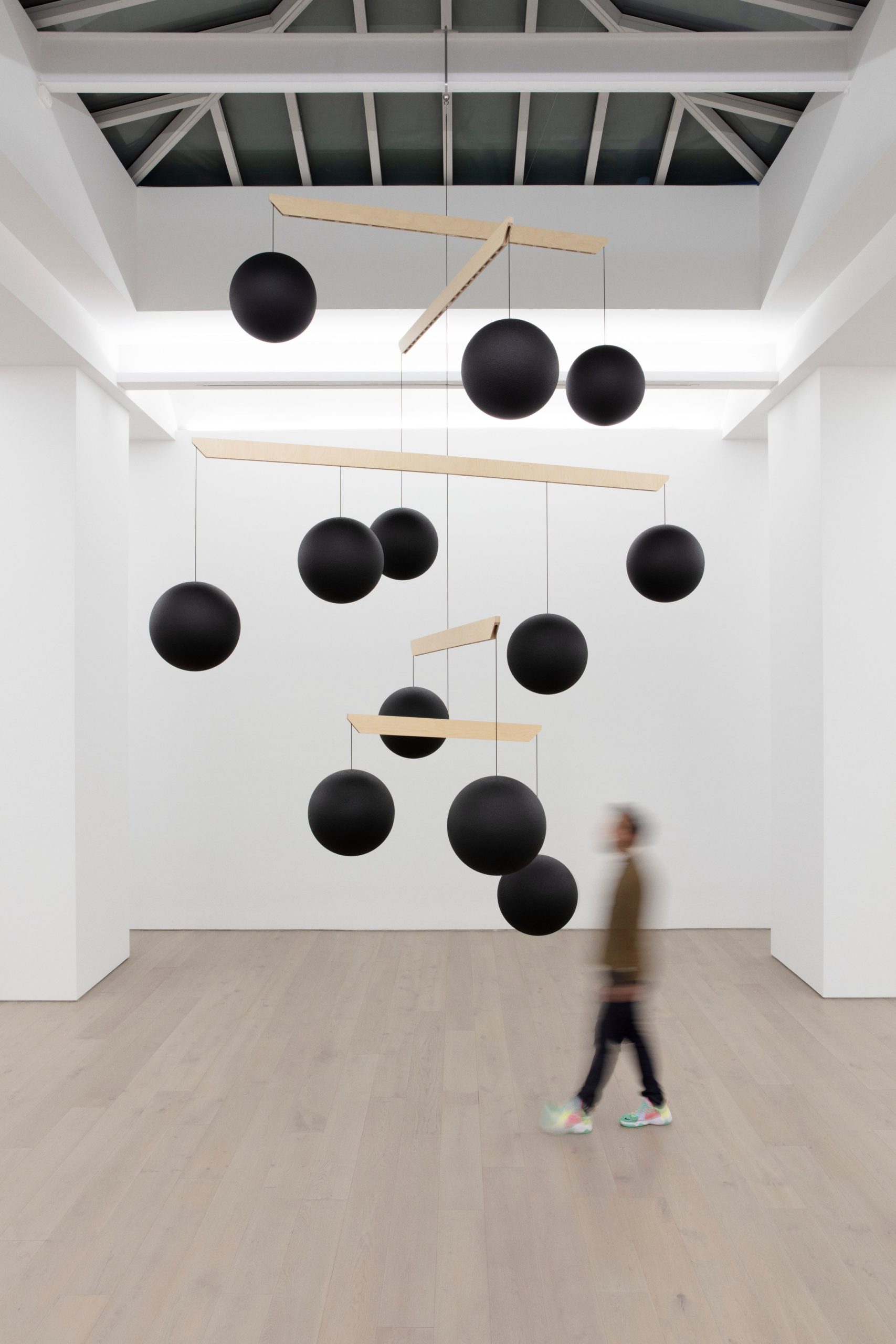
Xavier Veilhan, “Le Mobile n°2,” 2021, Composite mineral mortar, polyester resin, fiberglass, Birch plywood, stainless steel, cotton, 153 9/16 inches, Ø 137 13/16 inches; photo by Guillaume Ziccarelli, © Veilhan / ADAGP, 2021, courtesy of the artist and Perrotin.
WW: You focus on the social aspects of art, taking into consideration the space in which it’s being presented and how it interacts with viewers. Why is this important to you?
XV: I think what motivates me, what moves me the most is probably to be confronted to the
public in real life—but also to the public area without the filters that are usually existing between galleries, museums and the audience. Then, setting an object in the public area goes into competition; not with other artworks but with elements of the reality like cars, buildings, and people.
WW: In your creative process, do you find yourself implementing elements from all your explored mediums or does it vary from project to project?
XV: It varies from project to project [but] past work, no matter its medium, inspires new work. I’ve developed some puzzle pieces recently that are based on existing faceting sculptures for example: once they were scans, then sculpted, then the images of these sculptures were redefined through a camera, and recreated by assembling dozens pieces of hand painted wood.
WW: How do you tailor your practice to different mediums and scenarios, while still giving proper attention to the viewer/artwork interactions?
XV: It’s an artist/object/viewer triangle. It’s activated at the beginning of the show. When you are at the conception level you imagine everything through this missing link which arrives when the first visitors come at the show. The simple presence of a person activates the process, it’s a permanent process in art. Art is nothing without a viewer.
WW: Given your social focus, what did your practice look like during the recent period of isolation?
XV: When we got into the first lockdown, I started working on a new series of drawings, now called confinement drawings.I took the habit to do one drawing a day and to show it on Instagram. To share more, I asked my followers to title every one of them so we could create together and moreover exchange during this difficult time.
WW: What are you working on next?
XV: I am working more and more on performances, music, and movie. I started to play along with some professional musicians, and I like it, it’s very exciting, because it brings in the chronology into the process of art.
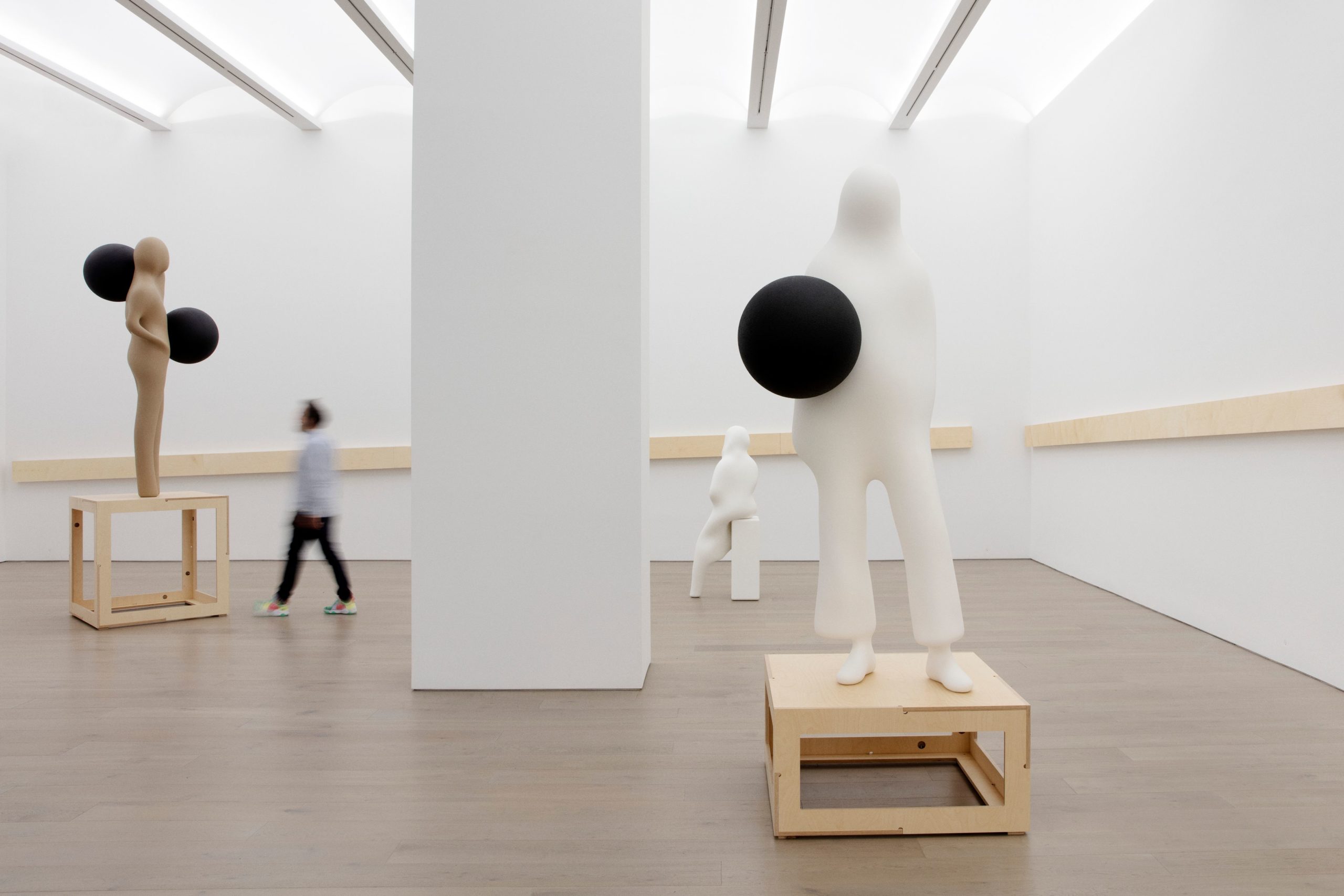
Exhibition view of “Xavier Veilhan: Autofocus” at Perrotin New York, 2021, photo by Guillaume Ziccarelli, © Veilhan / ADAGP, 2021, courtesy of the artist and Perrotin.
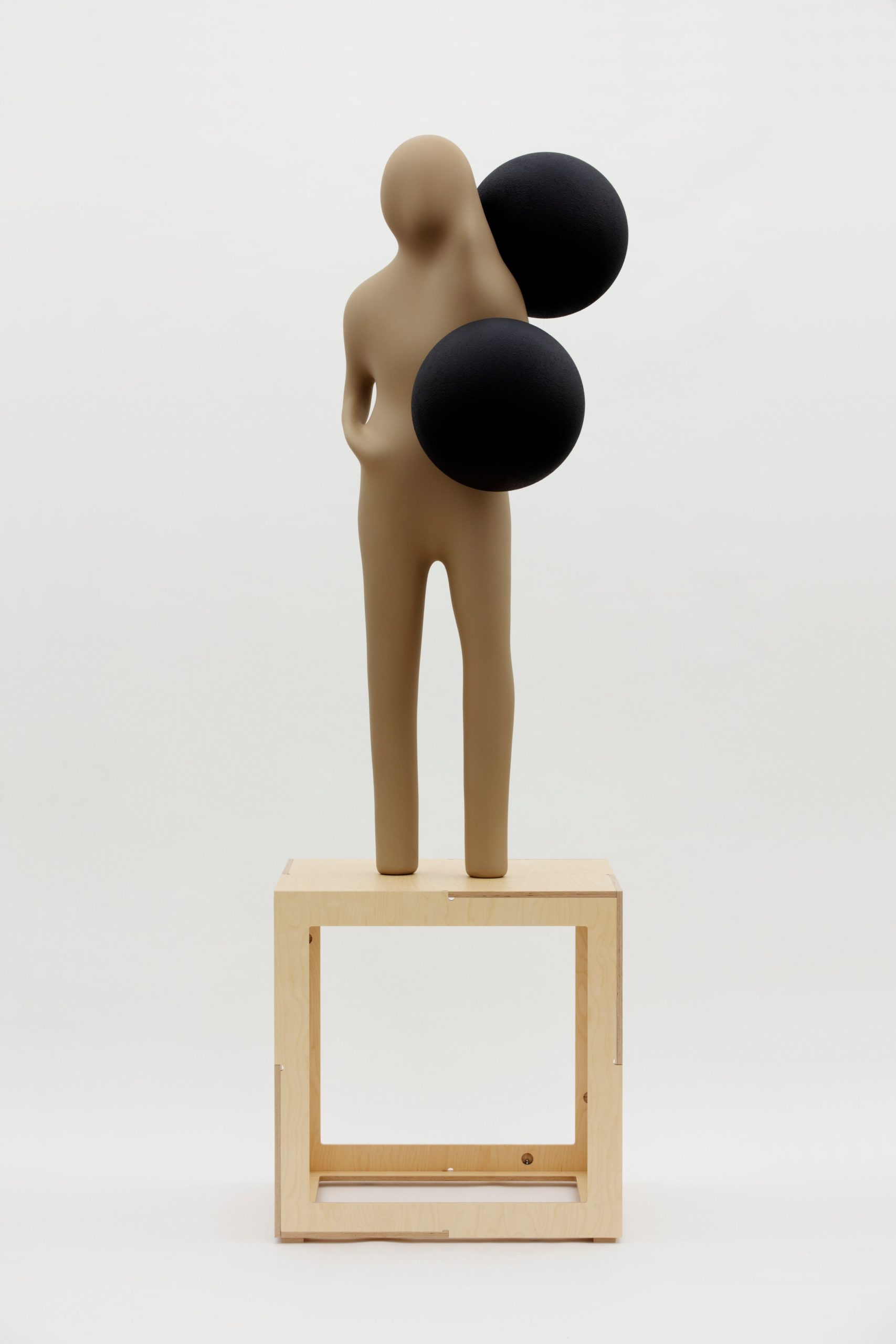
Xavier Veilhan, “Violeta,” 2021, Composite mineral mortar, polyurethane varnish, sculpture: 87 1/16 x 34 1/4 x 37 13/16 inches, pedestal: 39 3/8 x 39 3/8 x 39 3/8 inches; photo by Guillaume Ziccarelli, © Veilhan / ADAGP, 2021, courtesy of the artist and Perrotin.
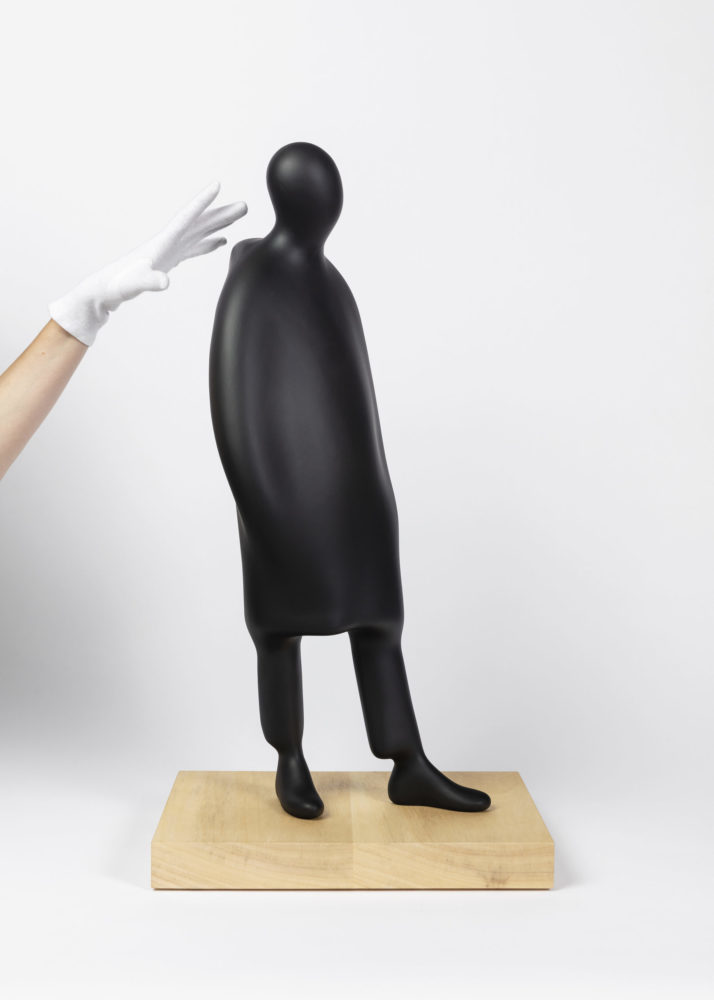
Xavier Veilhan, “David n°1,” 2021, Composite mineral mortar, pigment, polyurethane varnish, abachi wood, 29 1/2 x 15 3/4 x 11 3/8 inches; photo © Claire Dorn, Xavier Veilhan / ADAGP, 2021, courtesy of Perrotin.


